Protests are erupting around the globe. Thousands have broken out since October over the Israel–Hamas conflict. Farmers massed this year in Germany, Belgium, India and many other countries in clashes over new rules. And demonstrators last month set fire to the trademark Olympic rings in Paris to protest against the games being held there this summer, as part of a bid for higher wages.
Researchers say that these events are part of a broader trend. The number of protests each year more than tripled between 2006 and 2020 according to one global study, thanks to demonstrations about political regimes, injustice, inequality, climate change and more1 (see ‘Protests on the rise’). “That increase in activism has eclipsed even the turbulent 1960s,” says Lisa Mueller, who studies social movements at Macalester College in Saint Paul, Minnesota. “We really are in an empirically exceptional time of global protests.”
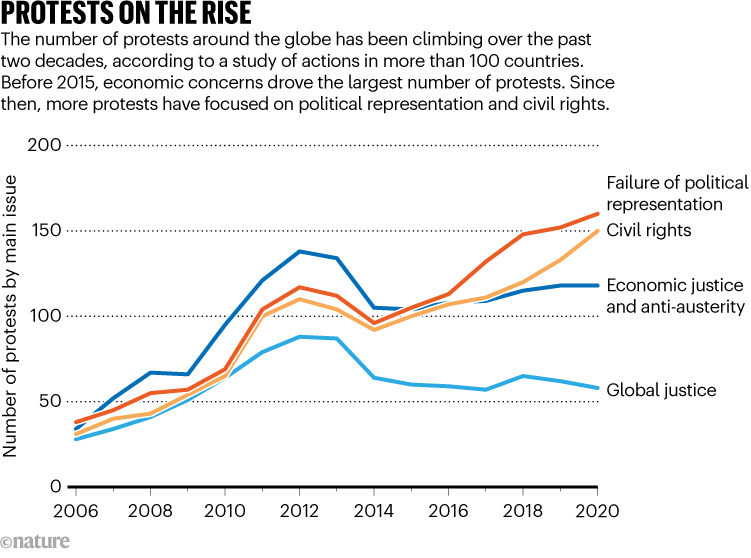
Source: Fig. 2 of Ref. 1
But are protests effective at driving change? Politicians rarely admit it, but “the honest answer is ‘sometimes’,” says Mueller, who is one of several social and political scientists studying the question. Research shows that protests can influence media coverage, public opinion, policy and politics — at least in the short term. For instance, studies suggest that civil-rights protests in the 1960s and the Black Lives Matter demonstrations in 2020 changed voting behaviour and even flipped elections, although not always in the way that protesters intended. Protests can also help to spur longer-term changes in public opinion — yet such influences are harder to trace.
Researchers are gaining insights into which factors boost the impact of demonstrations and other campaigns2. Large protests seem more effective than small ones; non-violent protests appear to be more potent than violent ones; unified goals might achieve more than diffuse demands do. Repression — by police, for instance — can win more support for protesters. Some researchers are trying to use the findings to help activists and social movements. “It’s a vibrant time to be studying protests,” Mueller says.
“Social protest and larger-scale social action is a way to generate social change — but that doesn’t mean it always will,” says Eric Shuman, a social psychologist at New York University who works in this field. “And we’re still trying to figure out when it will and when it won’t.”
Turbulent times
Table of Contents
In 2013, four researchers spent a summer scouring news reports of protests from about 100 countries to build a global database (https://worldprotests.org). They found that the number reported in major national and international media rose between 2006 and 2020 in all world regions, and that some of the largest protests in history took place during this time1.
The biggest was a 2020 strike in India against agricultural reforms, involving an estimated 250 million people. Others included the Arab Spring and Occupy movements in the early 2010s and global Black Lives Matter protests in 2020. “Protests are increasingly seen as the way to register disagreement or a lack of faith in institutions,” says Sara Burke, a co-author of the global study1 and a policy analyst in New York City at global think tank Friedrich-Ebert-Stiftung. The number of protests globally seems to have dipped slightly since 2021, according to the Armed Conflict Location & Event Data (ACLED) project.
Some research examines protests as part of revolutions. In one well-known study, US political scientists Erica Chenoweth and Maria Stephan collected data on more than 300 revolutionary campaigns, such as those aiming to oust a national leader, between 1900 and 20063. They included non-violent campaigns that used protests, strikes, boycotts and other tactics, as well as armed movements.
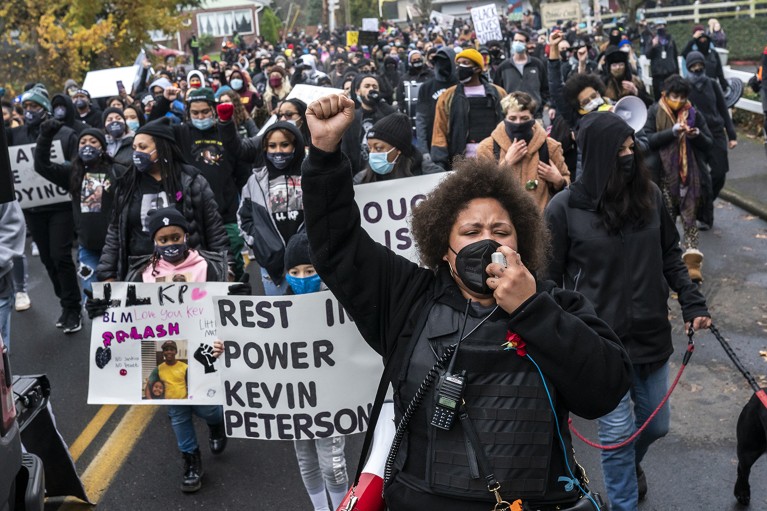
A Black Lives Matter rally in 2020 in Vancouver, Washington.Credit: Nathan Howard/Getty
The non-violent campaigns — such as the Philippines’ People Power Revolution that ousted dictator Ferdinand Marcos in 1986 — were about twice as likely to succeed at achieving regime change as were their armed counterparts, says Chenoweth, who studies civil resistance at Harvard Kennedy School in Cambridge, Massachusetts.
This work fits with other evidence suggesting that non-violent protests are more effective at achieving goals than are violent ones. But Chenoweth later found that the effectiveness of non-violent revolutionary campaigns is waning over time4 — in part, they say, because governments are learning how to suppress uprisings.
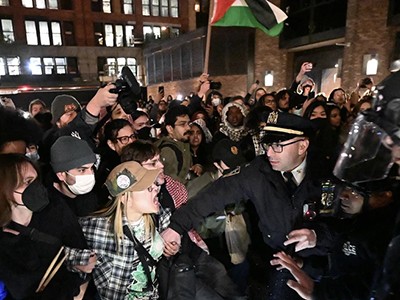
Protests over Israel–Hamas war have torn US universities apart: what’s next?
Chenoweth also showed that every movement that mobilized at least 3.5% of a population was successful. This led to what’s known as the 3.5% rule — that protests require this level of participation to ensure change. But the figure can be misleading, Chenoweth cautions. A much larger number of people are probably supporting a successful revolution even if they aren’t visibly protesting.
A key reason for the success of movements is that they have large numbers of supporters — and that’s “because numbers can translate into political leverage”, Chenoweth says. Once movements win enough proponents, they “change the way the elites think about the issue and make it politically impossible for them to proceed in the manner in which they otherwise would.” This is likely to be true for protests “across the board”, Chenoweth adds, not just for revolutionary campaigns.
The rain effect
For scientists in this field, the big challenge lies in showing that protests, rather than a confounding factor, cause any downstream event. “It’s very hard to prove causality,” says Omar Wasow, a political scientist at the University of California, Berkeley.
Chenoweth tackled this by looking at a clear outcome — an unexpected change in government within a year of peak mobilization by protesters.
Another way in which scientists show causality is to use the randomness of rainfall to create a natural experiment. Researchers are unable to randomly assign towns to receive protests or not and then compare the outcome. But studies show that rain reduces the number of people participating in such events — so researchers can assess the effect of a wave of demonstrations by comparing areas where it rained suddenly (and so had fewer protests) with similar areas where it didn’t rain (and had more protests).
Wasow used this approach in a well-known study of 1960s civil-rights protests5. He assessed rainfall in US counties in April 1968, when Martin Luther King Jr was assassinated, and analysed its relationship to voting behaviour in the November presidential election.
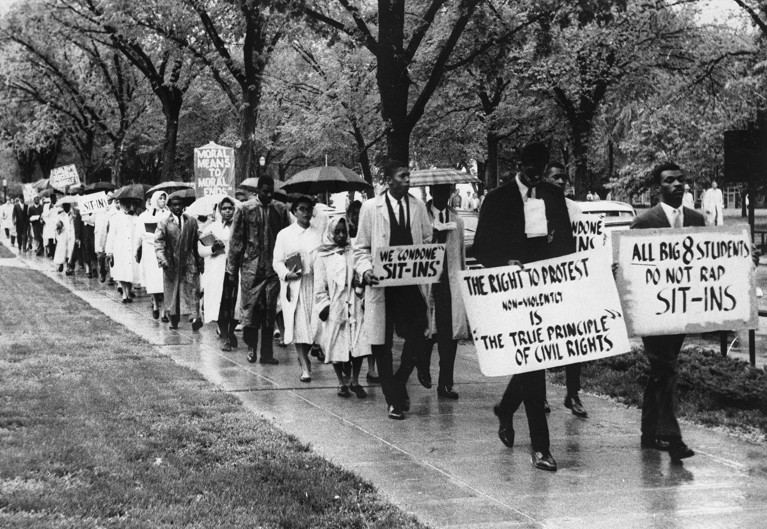
In May 1960, Black students at the University of Kansas protested for the right to stage non-violent sit-ins during civil-rights demonstrations.Credit: Bettmann Archive/Getty
Before the assassination, there was no link between rainfall and voting — this was a control. But in the week after the assassination, places with less rainfall experienced more violent protests. Wasow linked this to a 1.5–7.9% shift in white votes towards the Republican party (seen as being tough on crime). According to Wasow, violent protests “likely tipped the election” to the Republican nominee, Richard Nixon, over the Democratic candidate, Hubert Humphrey.
The Black Lives Matter protests in 2020 might have pushed US voters the opposite way. A 2021 study compared US counties that experienced unusually high rainfall — and so fewer protests — in the two weeks after George Floyd was murdered by police in Minneapolis in May 20206. The results showed that such protests, which were mostly peaceful, were linked to a 1.2–1.8% increase in Democrats’ share of the votes in the November 2020 presidential election.
Scientists acknowledge that studies are probably biased towards large and effective protests. Small demonstrations that don’t make headlines are unlikely to be counted or studied. And in some political regimes, protests are either forbidden or quickly repressed and thus not reported. Chenoweth says that’s changing, however, because most protests are reported on social media and so can be captured in data sets.
What works
Activists are more likely to achieve concessions if they have cohesive demands, Mueller’s work suggests7. She points, for instance, to two protests of similar size held in London. The first was the Take Back Parliament campaign in 2010 that pushed for electoral reform with coordinated slogans and demands. This level of organization, Mueller argues, helped to stimulate a UK referendum on the issue in 2011. (Voters rejected the proposed reforms.)
That contrasts with Occupy London in 2011, which was part of the global Occupy movement. These protests included wide-ranging calls to tackle inequality, financial regulation, climate change and oppression, and were criticized for lacking cohesion7. “When power holders are hearing a hodgepodge of demands, they struggle to interpret what the group wants,” Mueller says.
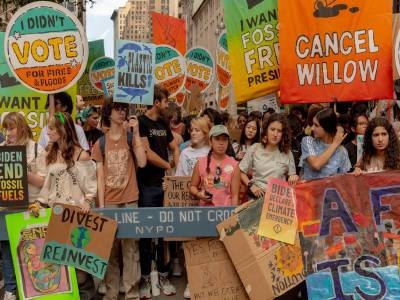
How effective are climate protests at swaying policy — and what could make a difference?
Chenoweth argues that the Occupy movement still had wide effects, because it put economic inequality on government agendas and helped a new generation of activists to meet and organize. “It can be easy to minimize the impacts that movements have if you only look at whether they achieved the thing they said they wanted,” Chenoweth says. A movement might change society slowly, and in other ways — although the influence of a particular protest then becomes harder to measure.
An important but overlooked factor in protest success is external context, says James Özden, founder of Social Change Lab, a non-profit organization in London that studies social movements. Demands for change are probably more effective if they happen at opportune moments — such as when those in power are supportive and “society is ready to hear that message”, says Özden, who now works at the grant-making foundation Mobius in London.
Less is known about the relative impacts of non-violent but disruptive tactics. “Is it better to throw soup on a painting, or block traffic, or glue yourself to something?” says Dana Fisher, a sociologist at American University in Washington DC. “We don’t know which is the most effective.”
But there is evidence that these types of protest can have an impact. Social Change Lab gathered opinions in three surveys — each asking around 2,000 people — before, during and after disruptive protests in the United Kingdom by Just Stop Oil and Extinction Rebellion in April 20228. The protesters blockaded oil depots and glued themselves to government buildings and oil-company offices. Most people who were surveyed opposed the actions, but continued to support climate policies and Just Stop Oil’s goals to stop new fossil-fuel projects. This counters the view that disruptive action can sour public opinion on an issue.
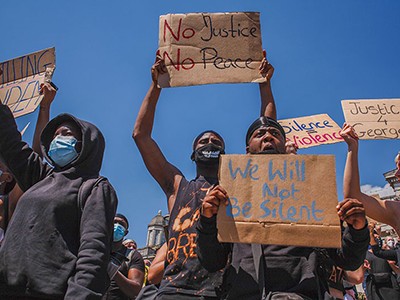
Thousands of scientists worldwide to go on strike for Black lives
Another factor that can make protests more effective is repression by authorities, according to researchers. Wasow’s studies, for instance, showed that violent repression of civil-rights protests prompted media coverage that was sympathetic to the protesters’ cause, whereas violence by protesters led to news reports that focused on riots and disorder5. “Non-violence is effective. But what’s especially effective is non-violence met by repression,” Wasow says. Knowing this, 1960s civil-rights activists “did things like pick cities to protest where they knew the police would be maximally repressive”, he says.
Another example of repression played out this April, when the president of Columbia University in New York City called on police to arrest campus protesters, many of whom were engaging in non-violent demonstrations against Israeli military action in Gaza. That sparked an escalation of media coverage and a wave of student protests elsewhere in the United States and abroad. “It crystallized national attention and gave them a common tactic,” Wasow says.
The campus protests this year “have got a lot of attention and mobilized people on campuses around the world”, says Fisher.
Some researchers are working to communicate the science of protests by writing books and working with activists. But, they say, it’s important not to preach academic findings — and to recognize that protesters are often expressing anger, grief and frustration as well as trying to drive change. “Sometimes, people have deep feelings that need a platform and a means of expression,” Wasow says. “The pragmatic concerns about ‘will this be effective or not’ are sort of second order.”
